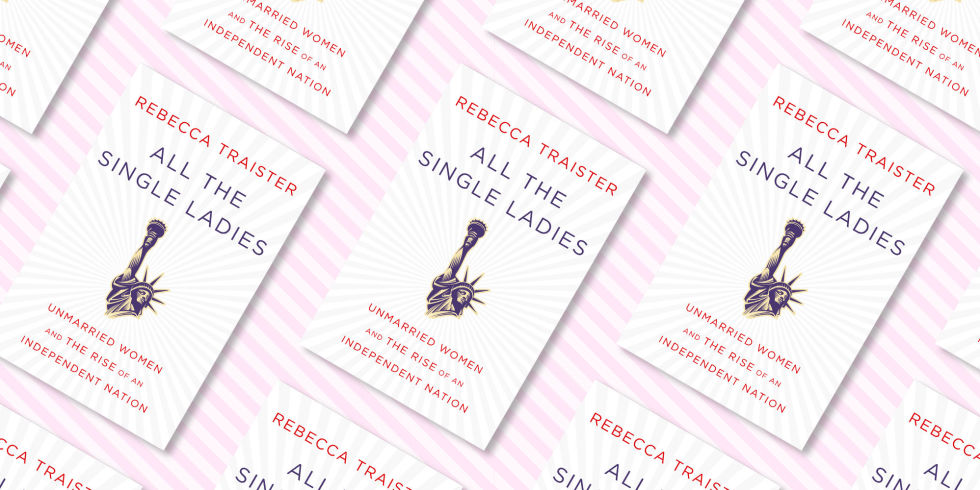ALL THE SINGLE LADIES:
Unmarried women and the rise of an independent nation
BY Zianna Milito
I’m walking down the aisle of a Boeing 737. I find my seat, 16B, and toss my jacket onto it, signaling to the man sitting in the aisle seat that I’ll need to scoot in. I smile at him, and he stands up. I open the overhead bin and squat down to pick up my overpacked suitcase. It’s just on the verge of being too heavy for me, but I manage to lift it up to my eye level. I lean back, trying to ground my body, to gather as much strength as I can, and with the suitcase still suspended air, I hear him holler: “You got it?”
The combination of that question and the presence of him and another man hovering over me — as if I wouldn’t be able to lift something I packed and got there by myself — was all I needed to plant my legs, stiffen my back and use every ounce of strength in me to get that suitcase in the compartment above. “I got it,” I said smiling. “Thanks.”
The way he backed away from me to let me in the row felt like I was being served my independence on a silver platter. He sat down after me and as I was situating myself in my seat I could feel him side-eyeing me in that ambiguous way that suggests either fear or a desire to converse. I pulled out the book I’d be reading for the duration of the flight: New York Magazine writer Rebecca Traister’s All the Single Ladies. I saw out of my peripheral vision that he was reading the cover of the book. He shifted, facing forward, and didn’t talk to me once during the six-hour flight.
This type of autonomy, to lift one’s own suitcase but to do so much more, as well, is exactly what Traister writes about in All the Single Ladies: Unmarried Women and the Rise of an Independent Nation. Although she started writing the book as a journalistic endeavor, it evolved into an insightful and witty work of literary nonfiction about women, featuring their stories in a way that’s both personal and anthropological. She strikes a balance between research, personal narrative, and external insight. The language is lofty yet precise, loaded with proof of her diligent research.
She starts with a history of unmarried women, from shame to power and back. Describing the historical ebb and flow of a society that tried so hard to domesticate women, Traister provides the necessary background to illustrate just how far that very society has come, and how much further it needs to go. She discusses how a growing United States influenced the role of women in society geographically, alluding to the great panic that ensued in the absence of young women to care for the needs of men, around whom an entire country was being built. Women took on this prescribed responsibility before feminist activists began to speak out as early as the 1800s. Traister contextualizes institutions established by notable unmarried female figures we know today, such as Margaret Sanger, the founder of Planned Parenthood. She grounds the book in a history packed with unmarried women discovering their power and sexuality, ultimately giving rise to what was called “the new woman.”
Traister, displaying the breadth of her knowledge, goes on to discuss the importance of cities, arguing that cities were monumental in the liberation of single women. She describes a woman’s relationship to her city as the best kind she can have; a relationship for herself. Staying loyal to the journalistic quality of the piece, Traister reports a thorough history of the space made for women in big cities (like Manhattan) via the establishment of female-only boarding houses, which were implemented to help single women get on their feet once many had migrated. Cities offered women the opportunity to socialize and be free of any preconceived expectations of them to find husbands and have children immediately — they had time, space, and resources to develop their careers and establish lives of their own. Traister, aware of the potency of a good personal narrative, adeptly intertwines the stories of everyday women, many of whom discuss their liberation and singledom with clarity and wisdom. Touching on the effect of neighborhoods, Traister argues that the support of neighborhoods allowed for single motherhood.
My favorite chapter of the book is “Dangerous as Lucifer Matches: The Friendships of Women.” It’s a compelling and entertaining commentary on the power of friendships between unmarried women. One is reminded of how revolutionary shows like The Mary Tyler Moore Show or Sex and the City were; these sorts of kinships have always been an essential sustenance for women. Traister argues that marriage makes such powerful bonds impossible; in a way, your best friend is your partner in life. They’re “your person,” as she calls it, and the acquisition of a husband inevitably makes friendships, no matter how strong, subsidiary. She tells emotional tales of best friends meeting, falling for each other, separating, reuniting, drifting apart, the eventual distance always due to men. She also provides a curious commentary about suspected homosexuality in female friendships, posing the question of what real partnership means: does love have to be sexual? In some ways, friendships between single women are better than the heterosexual marriages that society primes them to find; the faithfulness between a single woman and her person is unfaltering. She adds an entertaining anecdote about Charlotte Brontë’s husband insisting on censoring her letters between her and her best friend Nell Nussey, horrified by the intensity of their friendship.
While Traister’s All the Single Ladies is an extensive and entertaining story of the ever-rising successful single woman, she provides a disclaimer in the introduction that I thought would taint my trust in her as a reader. She is married. While fully impressed by and compelled to read all her research and stories, I couldn’t help but question her authority to write on unmarried women if she herself is married. Ultimately, though, my doubts subsided, and I gave her full ownership of the topic; she states that she started this work before she met her husband, and wrote similar stories her years of singledom. She lived her life as her own self first, and it is this point that she makes most fervently; her marriage has not and will not ever define her.
This book left me beaming with gratitude. As a woman who has always wondered about having a boyfriend and, like many women, has spent hours of thought and discussion with friends as to why I don’t have one, reading Traister’s ideas on the importance of and inherent power in being single liberated me, made me revel in my own existence. While I’m nowhere near marrying age (as it is dictated by current society, at least), I closed this book with a sense of relief. This really is the time of the single lady.
Originally published 05/10/16

